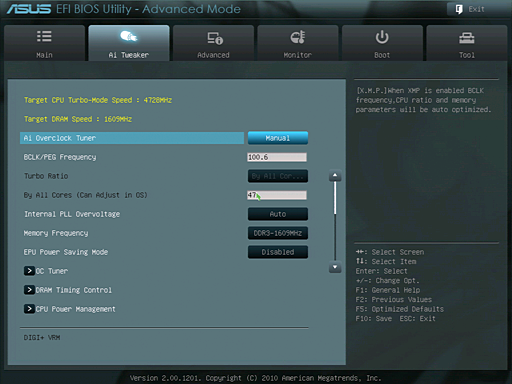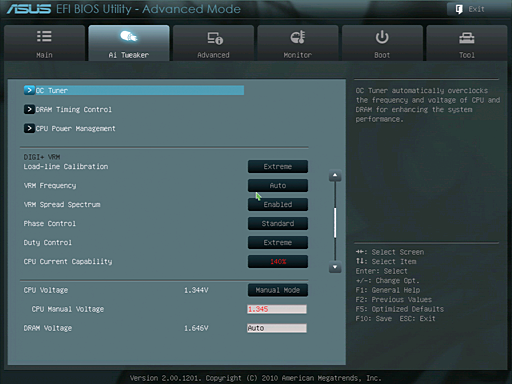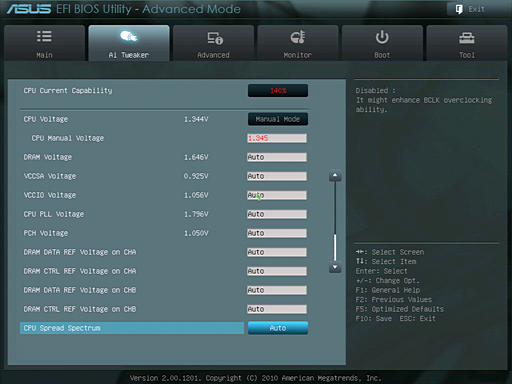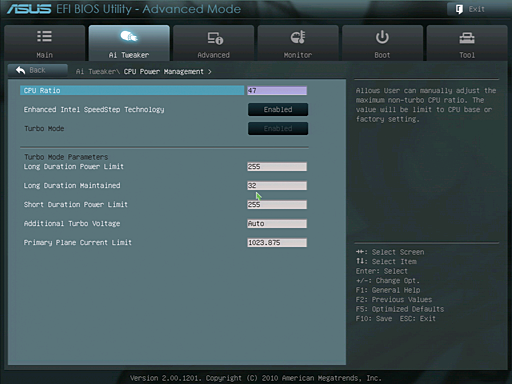High-End P67 Express: Five $200-250 Motherboards
With mainstream boards based on Intel's P67 Express chipset now priced well beyond $150, we reached into the $200-250 range to see what kinds of enhancements high-end buyers could expect just ahead of the anticipated Z68 Express launch.
Asus UEFI
Asus uses identical UEFI interfaces for both the EVO and Premium models of its P8P67 product line.
We actually like using Intel's Turbo Boost to overclock Sandy Bridge processors, since it allows our system to save tens of watts as it idles. Yet, Intel’s multi-step plan is designed to keep its CPU within a relatively small thermal and power envelope, and higher performance can be achieved by picking a single Turbo Boost ratio for all loads.
Choosing a 1.345 V core setting with “Extreme” load-line calibration keeps our fully-overclocked processor at 1.35 V under full load when using the P8P67 Deluxe. The EVO requires a slightly lower 1.340 V setting to achieve similar results.
Asus adds DRAM reference voltage to its assortment of voltage controls. CPU Core, CSA, VTT, and PLL voltage levels are all adjustable.
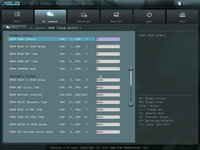
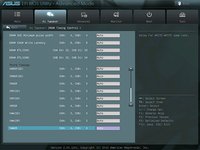
Asus’ memory timings menu is a little more complete than ASRock’s, and Asus doesn’t force users to make two adjustments to control a single setting.
Overclockers also have the option to increase base frequency. You may or may not know that non-K-series SKUs have access to a limited range of multiplier settings above the stock ratio, so long as you use them on P67-based motherboards. The CPUs can run at up to four bins faster, and then Turbo Boost up to four more bins when only a single core is active. Access to that lets these boards enable a modest overclock, even if you didn't splurge on a completely unlocked Core i5 or Core i7.
Get Tom's Hardware's best news and in-depth reviews, straight to your inbox.
-
joytech22 So glad I grabbed my P8P67 Deluxe!Reply
It had all the features I was looking for at a low enough price to make it very appealing. -
Crashman rolli59Nice article would have been nice to have a Gigabyte board in there as well.Please tell Gigabyte to produce something for this market!Reply
Tom's Hardware included the UD4 in its $150-200 motherboard roundup, and the UD5 costs more than $250. -
Manos How te hell is it possible that a website like this keeps ignoring my question as in WHY its been for so many months if not year or whatever, that they dont fix this *** and I cant click to submit my comment from IE? How can THIS be the only website with issues with IE? I find it rather sad. Its why i quit commenting instead of being forced to open a different browser for this site which I used to love and respect. Till they started ignoring this issue Ive been pointing out ( and not just me ).Reply
Thank you for the charts tho id love to see one with Maximus IV included x.x ( I edited cause I asked something stupid as in why I dont see it in the chart. Sorry.. Been working all night and no time to read the article. Bits only.And no I obviously hadnt read the title x.x My bad. Happy Easter! -
jerreddredd It would have been nice to see if there is a performance gain in these "high end" boards over a value P67 board.Reply
For an even better article also throw in one of each value rated H67 and H61 boards. ($240 vs $130 vs $70 boards)
-
alidan jerreddreddIt would have been nice to see if there is a performance gain in these "high end" boards over a value P67 board. For an even better article also throw in one of each value rated H67 and H61 boards. ($240 vs $130 vs $70 boards)this, i would love to see how the high end stacks up with the low end. the low may not have as much as the high end, but performance is really all that matters considering we can just get expansion cards for things we dont have.Reply -
Hupiscratch Great article. Now it´s time for the high-end overclocking oriented boards, like the ASUS Maximus IV Extreme.Reply -
memadmax I'm gonna go all out on this chipset when it matures a bit. A cool 5 grand i'm thinking for my next gen build.Reply
